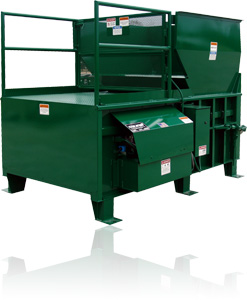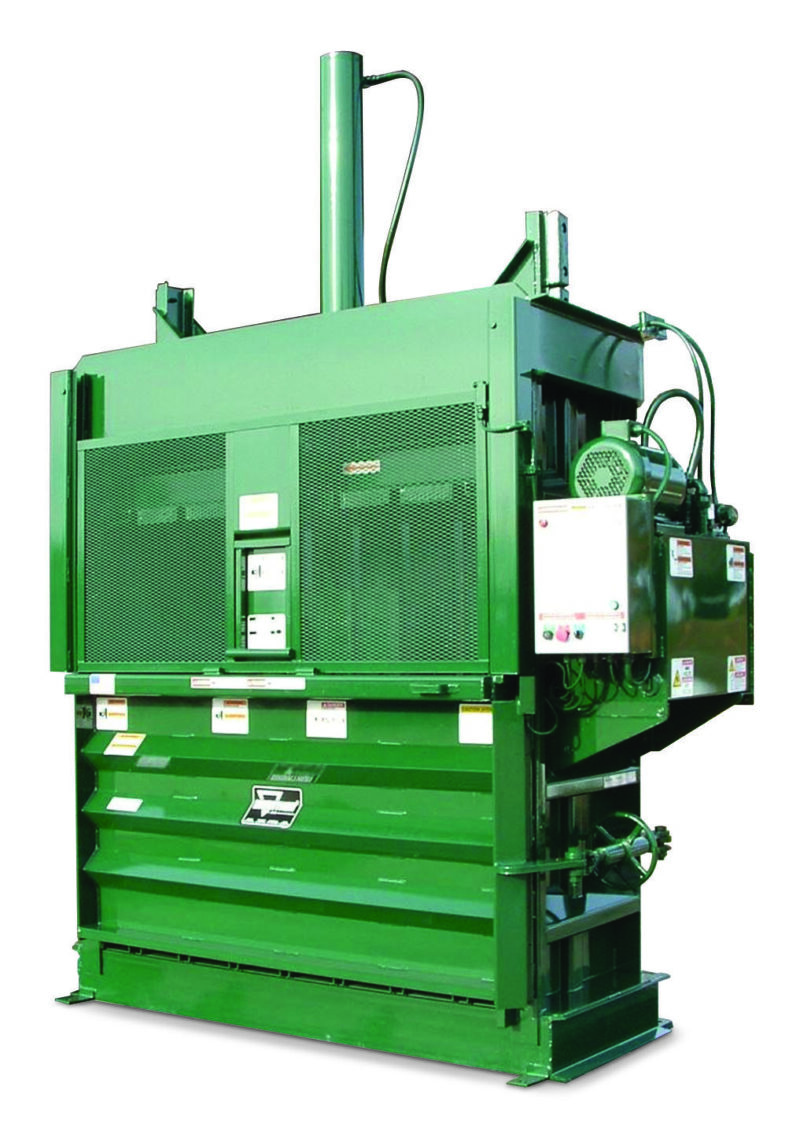Rent a Baler for Hassle-Free Hazardous Waste Handling
Checking Out the Necessary Role of Waste Tools in Modern Recycling Processes and Sustainable Waste Disposal Practices
The vital duty of waste equipment in modern recycling processes highlights its significance in attaining sustainable garbage disposal practices. Advanced systems, such as automated sorting innovations and compactors, not just enhance effectiveness but also play a crucial duty in lowering contamination rates and improving product recovery. As the need for even more lasting options grows, it is vital to check out just how these modern technologies adjust to evolving difficulties within waste monitoring. What innovative innovations are on the horizon that could better transform these procedures?
Relevance of Waste Devices
Why is waste equipment essential in the recycling process? By facilitating the separation of materials, waste tools minimizes contamination, which is paramount in ensuring high-quality recyclables that can be reintroduced into making cycles.
In addition, waste tools improves operational effectiveness and security within recycling centers. Advanced equipment, such as shredders and balers, permits the fast processing of large quantities of waste, lowering labor expenses and processing time. Furthermore, the usage of customized tools reduces the risk of injury amongst employees by automating unsafe jobs.
Moreover, the environmental influence of recycling is intensified by reliable waste devices. By enhancing the recycling process, centers can dramatically minimize the volume of waste sent out to garbage dumps, thus adding to sustainability initiatives. To conclude, waste devices is not simply a supplementary part of reusing; it is an essential element that drives efficiency, security, and environmental stewardship in modern-day waste management practices.
Sorts Of Waste Tools
The efficiency of reusing procedures is very closely linked to the specific kinds of waste devices used while doing so. baler rental. Various categories of devices are important to the collection, sorting, handling, and transport of recyclable materials
To start with, collection devices, such as waste collection vehicles and bins, is crucial for collecting recyclables from various sources, consisting of household, industrial, and commercial areas. Once collected, sorting devices, consisting of conveyor belts, shredders, and magnetic separators, plays a crucial function in differentiating various product kinds, ensuring that contaminants are eliminated before processing.
Processing devices, such as balers and compactors, additionally prepares products for reusing by pressing and packaging them right into workable dimensions. This not just enhances area however likewise improves transport effectiveness. Furthermore, specialized machinery like granulators and extruders is utilized for transforming materials into reusable kinds, specifically in plastic recycling.

Function in Recycling Processes
In reusing procedures, the function of waste equipment is crucial in ensuring effectiveness and efficiency at every stage. This tools encompasses a series of machinery designed to handle, process, and kind products that are to be reused. The preliminary stage entails collection and transport, where compactors and balers play a crucial function in optimizing the quantity of materials for transit, thus reducing operational costs.
When at the recycling facility, shredders and crushers come right into play, breaking down products into convenient sizes suitable for further handling. These machines add to boosting the surface of recyclables, promoting much more reliable material recuperation. Sorting systems, geared up see this page with sophisticated modern article source technologies such as conveyor belts and optical sensing units, make sure that materials are accurately separated by kind, therefore optimizing the top quality of the recycled final product.
In addition, customized tools for handling particular products-- such as glass, plastics, and steels-- ensures that each kind is taken care of in one of the most reliable fashion. On the whole, the integration of sophisticated waste equipment right into the reusing procedure not just simplifies operations however likewise substantially adds to the total recuperation rates of important materials, emphasizing its essential duty in contemporary recycling efforts.
Impact on Lasting Practices
With the effective operation of waste tools, reusing processes substantially enhance sustainable techniques across numerous industries. This impact is recognized via enhanced material healing rates, look here which minimize the need for virgin resources. By improving sorting and handling features, advanced waste devices minimizes contamination in recyclable products, thereby boosting the quality of recycled output. The decrease of waste sent to landfills is an additional important benefit, as it minimizes environmental deterioration and mitigates greenhouse gas exhausts related to disintegration.

Furthermore, the integration of smart technologies in waste administration systems enables real-time information tracking and evaluation, causing even more educated decision-making and functional effectiveness. As sectors increasingly focus on sustainability, the function of waste tools becomes paramount fit techniques that line up with environmental stewardship and regulative conformity. Eventually, the harmony in between waste equipment and reusing processes plays an essential function beforehand wider sustainability goals throughout communities and markets alike.
Future Trends in Waste Administration
Emerging patterns in waste monitoring are positioned to reshape the landscape of reusing and resource healing considerably. Among the most essential shifts is the assimilation of innovative modern technologies such as synthetic knowledge, maker discovering, and the Net of Points (IoT) These developments facilitate enhanced arranging processes, improving the effectiveness and precision of reusing operations. Smart waste containers equipped with sensors can check waste levels in real-time, optimizing collection routes and reducing functional prices.
In addition, the round economic climate version is getting grip, advertising the concept of recycling materials instead of taking care of them. This pattern urges companies to develop products with end-of-life considerations in mind, driving the need for cutting-edge waste monitoring solutions.
Furthermore, public recognition and interaction in sustainability techniques are on the increase, leading to increased participation in recycling programs. Government plans are likewise developing, with more stringent guidelines on garbage disposal and rewards for lasting techniques.
As these patterns converge, they produce a more reliable, lasting waste monitoring system that not just reduces ecological influence yet likewise cultivates economic growth via resource healing and advancement in waste tools. The future of waste monitoring looks promising, driven by technology and a dedication to sustainability.
Verdict
Finally, waste equipment plays a critical duty in enhancing the performance and effectiveness of contemporary reusing processes. By decreasing contamination and maximizing product recovery, progressed equipment supports lasting garbage disposal methods and cultivates a circular economic climate. The consolidation of clever modern technologies additionally enhances these initiatives, guaranteeing accountable environmental stewardship. As waste monitoring remains to progress, the relevance of ingenious waste devices will certainly remain extremely important in achieving sustainability objectives and attending to the difficulties of resource deficiency.